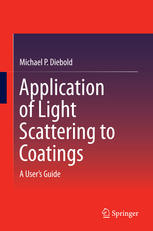

Most ebook files are in PDF format, so you can easily read them using various software such as Foxit Reader or directly on the Google Chrome browser.
Some ebook files are released by publishers in other formats such as .awz, .mobi, .epub, .fb2, etc. You may need to install specific software to read these formats on mobile/PC, such as Calibre.
Please read the tutorial at this link: https://ebookbell.com/faq
We offer FREE conversion to the popular formats you request; however, this may take some time. Therefore, right after payment, please email us, and we will try to provide the service as quickly as possible.
For some exceptional file formats or broken links (if any), please refrain from opening any disputes. Instead, email us first, and we will try to assist within a maximum of 6 hours.
EbookBell Team

4.0
86 reviewsThe book begins with the fundamentals of light scattering, first by individual particles, then by small groups of particles, and finally by the trillions of particles present in a real-life paint film. From there, Dr. Diebold focuses on application of these fundamentals to paint formulation. The scope includes both theory and practice with an emphasis on application (from both performance and cost standpoints). The book gives a clear understanding of light scattering principles and application of these principles to paint formulation (with a focus on TiO2 – the strongest scattering material available to paint formulators). The reader will be in a position to formulate and reformulate paints for maximum cost effectiveness. Application of Light Scattering to Coatings: A Users Guide is ideal for a range of professions working in paint formulation and manufacturing.
This book also:
Distills difficult theories (light scattering, paint formulation) into easy-to-understand concepts
Adopts a qualitative perspective, with minimal use of complex equations, making key scientific concepts accessible to all paint formulators without a prerequisite of higher mathematics
Offers an accessible resource for formulators new to the field while maintaining a high degree of relevance to experienced coating formulators
Discusses the interplay between resin, TiO2 pigments, and paint extenders with regard to paint performance and cost
Presents an unbiased assessment of opacifying potential of TiO2 alternatives
Outlines strategies for minimizing overall costs of paints.